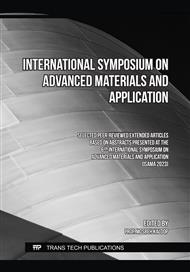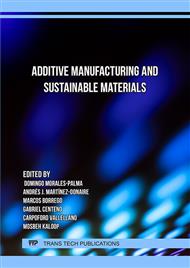[1]
Yu.V. Khlistun, Construction, reconstruction, overhaul of capital construction projects. Regulatory documents for building materials and products. Production and use of building materials, products and structures. Concrete and mortar, Saratov, IPR Media, 2015.
[2]
S.A. Dergunov, S.A. Orekhov, Dry building mixes (composition, technology, properties), Orenburg State University, Orenburg, 2012.
[3]
G.G. Ilyinskaya, Dry finishing construction mixtures on composite binders, PhD thesis 05.23.05 - Building materials and products, Belgorod State Technological University, Belgorod, 2012.
[4]
M.A. Sadovnikova, Dry construction mixture for restoration and decoration of buildings, PhD thesis 05.23.05 - Building materials and products, Penza State University of Architecture and Civil Engineering, Penza, 2015.
[5]
A.P. Pichugin, V.F. Khritankov, I.V. Belan, Dry construction mixture with increased performance characteristics, Novosibirsk State Agrarian University, Novosibirsk, 2014.
[6]
Ar. Arzumanyan, Av. Arzumanyan, H. Qaramyan, N. Muradyan, Conceptual Approaches to Solving the Issue of Reinforcing the Rock - Cut Structures of Geghard Monastery Complex, Journal of Architectural and Engineering Research (JAER). 2 (2021) 3-9.
[7]
Yu.S. Karagulova, Ye.A. Nikolenko, S.V. Kaloshina, Traditional and Alternative Compositions for Plastering Works, Modern Technologies in Construction. Theory and Practice. 2 (2017) 262-268.
[8]
L.Ya. Kramar, B.Ya. Trofimov, T.N. Chernykh, A.A. Kirsanova, V.V. Zimich, Modifiers of Cement Concrete and Mortar Technical Characteristics and Mechanism of Action, South Ural State University, Chelyabinsk,2017.
[9]
A.A. Chikichev, Dry construction mixtures for protecting covering of walls, operating in wet rooms, PhD thesis 05.23.05 - Building materials and products, Tomsk, 2019.
[10]
E.I. Shmitko, A.V. Krylova, V.V. Shatalova,Chemistry of Cement and Binding Substances, Voronezh State University of Architecture and Civil Engineering, Voronezh, 2005.
[11]
H.H. Qaramyan, G.G. Manukyan, V.P. Toroyan, V.R. Harutyunyan, N.B. Knyazyan, Inwestigation of Composition of Plasters of the Surb Hovhannes (Surb Sargis) Church in Meghri, NPUA Proceedings, Chemical and Environmental Technologies. 2 (2018) 78-85.
[12]
H.H. Qaramyan, Development of Dry Sand-Lime New Multicomponent Mortars into the Historical Cultural Monuments Applied on Local Raw Basis, Key Engineering Materials. 906 (2022) 53-58.
[13]
K.I. Lvovich, Sand Concrete and its use in Construction, Stroy-Beton Publishing House, St. Petersburg, 2007.
[14]
P.I. Yukhnevsky, Influence of Chemical Nature Additives on the Properties of Concrete, Minsk, BNTU, 2013.
[15]
W. Kurdowski Cement and concrete chemistry, Springer, 2014. DOI 10.1007/978-94-007-7945-7
[16]
L.I. Dvorkin, Building material science. Russian-English Reference Book, Infra-Engineering, Moscow, 2020.
[17]
GOST 5382-2019, Cements and materials for cement production. Chemical analysis methods,Standardinform, Moscow, 2019.
Google Scholar
[18]
L.M. Sulimenko, V.G. Savelyev I.N. Tikhomirova, Fundamentals of Technology of Binders, University of Chemical Technology of Russia, Moscow, 2001.
[19]
M.I. Kuzmenkov, O.E. Khotyanovich, Chemical Technology of Binders, BSTU, Minsk, 2008.
[20]
Z.A. Atsagortsyan, Natural stone materials of Armenia. Stroyizdat, Moscow, 1967.
[21]
D. Shriver, P. Atkins, Inorganic Chemistry, vol. 2, Mir,Moscow, 2004.
[22]
A.A. Qaramyan, Peculiarities of Mortars Used in the Ancient Monuments of Armenia and Their Restoration Methods, Bulletin of the National University of Architecture and Construction of Armenia. 5 (2015) 45-49.
DOI: 10.24151/1561-5405-2017-22-6-518-527
Google Scholar



